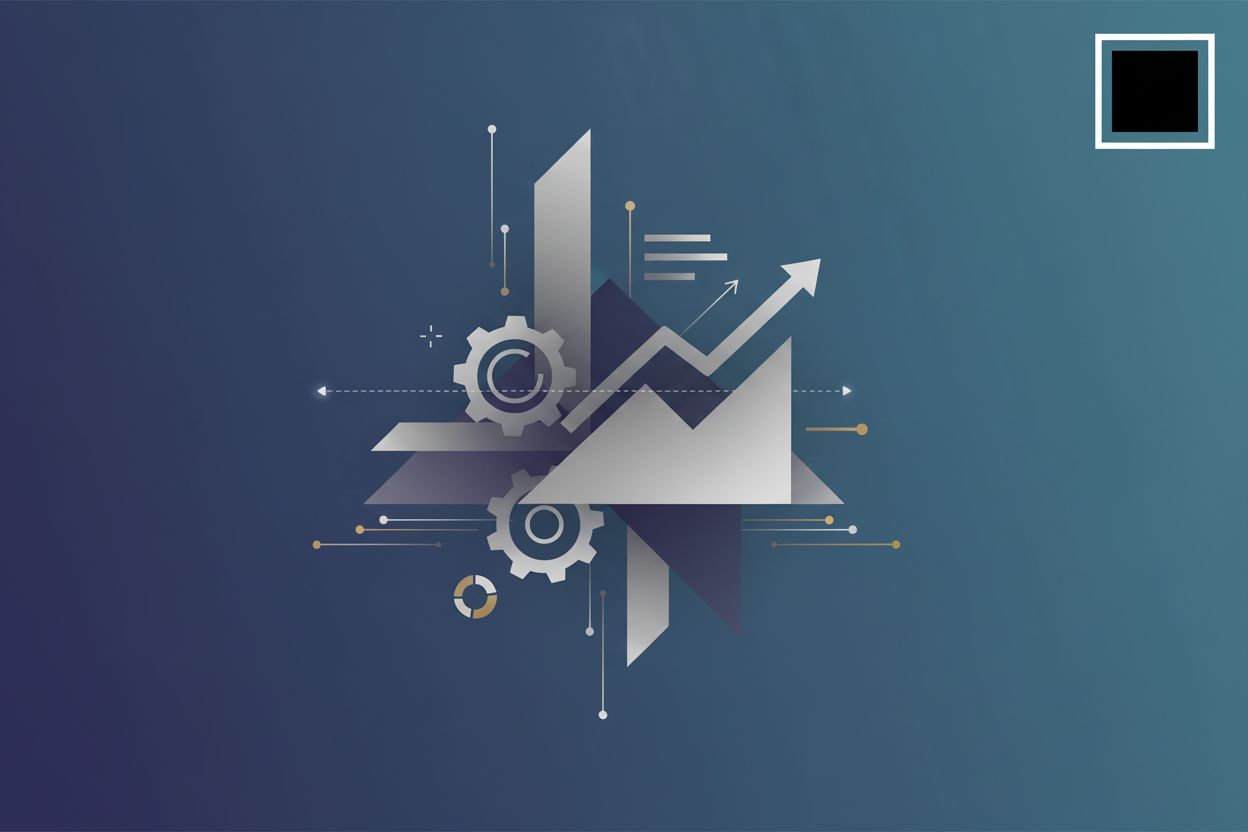Identifying Key Characteristics of Native Advertising
TL;DR
Understanding Native Advertising: What Makes It Unique?
Okay, let's dive into what makes native advertising tick. Ever click on an article that felt exactly like the site you were on, only to realize it was actually an ad? That's the magic – and sometimes the trickery – of native advertising.
At its heart, native advertising is all about fitting in. It's gotta mimic the look and feel of whatever platform it's on. Think of it as advertising camouflage, blending seamlessly into the environment. The idea is to provide actual value to you, the user, instead of just being a disruptive eyesore. Nobody likes those!
Why does this work so well? Well, our brains are kinda wired to like things that are familiar and easy to process. When an ad looks and feels like the content we're already consuming, it doesn't require as much mental effort to engage with. Plus, when it's done right, it feels less like a sales pitch and more like helpful information, which builds trust.
Here's how it achieves that seamlessness:
- Advertising Camouflage: This is the core principle – making the ad indistinguishable from the surrounding editorial content.
- Seamless Integration: It's designed to not scream "AD!" from the rooftops. It matches the site's design, font, and even the editorial style. For example, a sponsored article on a travel website might look just like any other travel guide, complete with similar formatting and imagery.
- Value-Driven: The best native ads offer something useful – information, entertainment, or a solution to a problem. For instance, a home improvement brand might sponsor a "DIY Weekend Project Ideas" article on a lifestyle blog, providing genuine inspiration to readers. Or a financial institution could offer a guide on "Saving for Your First Home" on a personal finance news site.
- Contextual Relevance: The ad's content is relevant to what you're already looking at. A sponsored post about financial planning on a personal finance blog is a perfect example. Another might be a recipe sponsored by a food brand appearing on a cooking website.
Now, don't get native advertising twisted for content marketing. While both aim to provide value, there's a key difference. Native advertising is explicitly paid. It's that simple. Content marketing, on the other hand, is more about building a long-term relationship with an audience. It's not always about that immediate sale; it's about trust and establishing brand authority. For example, a native ad might aim for immediate engagement or a lead generation, while a content marketing piece might focus on educating the audience over time to foster loyalty.
Native advertising often lives on a publisher's site, while content marketing usually hangs out on the brand's own turf. Think sponsored articles on a news site versus blog posts on a company website.
So, what's next? Time to explore the key characteristics that make native advertising campaigns truly effective.
Key Characteristics of Effective Native Advertising Campaigns
Alright, let's talk about what makes native advertising work. It's not just about slapping an ad on a page; it's gotta be done right. Think of it like making a really good cup of coffee – you can't just throw everything in and hope for the best.
First off, it's gotta blend in, like a chameleon at a rainbow party. I mean, imagine seeing an ad that looks totally out of place on your favorite news site – you'd click away faster than you can say "banner blindness." So, use the same fonts, colors, and overall design as the site itself. Get it?
- Look and Feel: Mimic the surrounding content. If it's a tech blog, make your ad look like a tech review. If it's a fashion site, make it look like a style guide. This means paying close attention to typography, color palettes, and image styles. You get the idea, right?
- Context is King: Make sure it's relevant to the audience. A financial services ad on a personal finance blog? Makes sense. The same ad on a gaming site? Not so much. The content should align with the user's current intent and interests.
Nobody clicks on ads just for the heck of it. You gotta give 'em something good – information, entertainment, a solution to their problems. Don't be that annoying salesperson pushing a product nobody needs.
- Informative Content: Share insights, tips, or how-to guides. For example, a healthcare company could create a sponsored article on "5 Ways to Improve Your Sleep," offering actionable advice. Or a software company could publish a "Beginner's Guide to Cloud Computing."
- Solve Problems: Address common pain points. A retail company could create a native ad answering "What to Wear to a Summer Wedding?" or a tech company might offer a guide on "Troubleshooting Common Wi-Fi Issues."
Look, nobody likes being tricked. It's gotta be clear that it's an ad, even if it blends in so well. Otherwise, you're just damaging your brand's trust.
- "Sponsored" or "Promoted": Clearly label it. Don't try to hide it or use sneaky language. Publishers have strict guidelines on this, and it's crucial for maintaining credibility.
- Avoid Deception: Don't make false claims or exaggerate the benefits. Honesty is always the best policy, right? This includes ensuring the content itself is accurate and doesn't mislead the reader.
Think of it this way: native advertising is like a friendly conversation, not a used-car salesman pitch. Do it right, and you'll build trust and engagement. Mess it up, and you'll just annoy people.
Next up: let's talk about the benefits native advertising can bring to brands.
The Benefits of Native Advertising for Brands
Native advertising? It's more than just ads, folks. It's about becoming a part of the experience. The cool part is it can really give your brand a boost.
Native ads, they tend to pull in more eyeballs and clicks compared to your regular, run-of-the-mill display ads. Studies have shown that native ads can achieve click-through rates up to 10x higher than traditional display ads. Think about it: you're scrolling through your favorite news site, and an article pops up that looks exactly like everything else there, but it's secretly an ad. You're way more likely to click on that than some random banner ad screaming at you, right? And because it's not all in-your-face "BUY NOW," people are more likely to trust what you're saying.
- Higher Click-Through Rates: People are just more likely to click on something that feels like it belongs. This increased engagement means more potential customers are seeing your message.
- Building Trust: Providing value upfront builds trust, which is always a good thing. When users feel they've gained something from an ad, they're more receptive to the brand behind it.
Native advertising lets you sneak onto platforms where your target audience already hangs out. It expands your reach beyond your own website, social media, all that jazz. Partnering with, like, a really popular blog in your niche? That's a sweet way to introduce your brand to a whole new crowd.
This flowchart illustrates how native advertising on an existing platform (like a popular blog) connects your brand with a new audience that might not otherwise discover you.
So, what's the takeaway? Done right, native ads can be a powerful tool, driving engagement, building trust, and reaching new customers. Next up, we'll explore the challenges and considerations you need to keep in mind.
Challenges and Considerations When Implementing Native Advertising
Okay, so you wanna jump into native advertising? Seems easy, right? But hold on a sec—there's some stuff you gotta think about first. It's not all sunshine and rainbows, you know?
One of the biggest headaches is keeping things honest. Publishers, they're walking a tightrope, ya know? They need that ad money, but they also gotta keep their readers' trust. If your native ad makes the site look biased, people are gonna bolt. It's a balancing act for sure.
- Quality Check: Make sure your ad actually fits the site's vibe. If it's a serious news site, don't be slinging clickbait. Keep it classy, or you're gonna have issues. This means ensuring the content is well-written, accurate, and aligns with the publisher's editorial standards.
- No Bias Allowed: Editorial integrity is key. Keep things objective, and don't let the ad dollars sway the content. Readers can smell BS a mile away. Publishers often have strict policies against sponsored content that presents opinions as facts or unfairly promotes a product.
- Rules of the Game: Clear guidelines are a must. Everyone needs to know what's cool and what's not. Keeps things ethical, ya know? Common rules include clear disclosure requirements (e.g., "Sponsored Content," "Promoted"), content restrictions (e.g., no hate speech, no misleading claims), and adherence to platform-specific formatting. Violating these can lead to content removal, account suspension, or loss of partnership.
Figuring out if your native ad is paying off? Tricky business. It's not always as simple as counting clicks; you need to think about conversions and engagement, too. Attribution modeling, for example, helps you see how much those ads are actually helping your overall goals. It's a process of assigning credit for conversions to various touchpoints in the customer journey. For native ads, this can be complex because their integrated nature makes it harder to isolate their specific impact from other marketing efforts.
- Mix it Up: Don't just look at one thing. Check traffic, engagement, and sales. The whole shebang, right? Look at metrics like time on page, scroll depth, and social shares alongside conversion rates.
- Give Credit Where It's Due: Attribution modeling helps you understand the role native ads play in driving desired outcomes.
Nobody likes being tricked; that's just a fact. If your ad feels like a scam, people are gonna be mad, and then the brand's reputation will be on the line.
- Transparency is Key: Always be upfront about it being an ad. No sneaky stuff. This is non-negotiable for maintaining user trust.
- Don't Overpromise: Exaggerating? Bad move. Keep it real, or you'll lose trust quick. Ensure your content accurately reflects the product or service being promoted.
So, you've got to think about all these things, otherwise, your native ad campaign will fall flat. Next, we'll explore the exciting future trends in native advertising.
Future Trends in Native Advertising
So, what's next for native advertising? Are we talking flying cars and ads that read your mind? Not quite, but the future's still pretty interesting – especially with the way tech is changing things up.
ai is making native ads way more personal, it's kinda cool! I mean, imagine ads that actually get what you're into. Machine learning algos can dig into your online behavior and spit out content that's, like, actually relevant. This isn't just about getting you to click; it's about keeping you hooked and getting some results.
- ai can analyze tons of data to figure out what makes you, you. This could involve looking at your browsing history, purchase patterns, and even social media interactions.
- This means ads can be tailored to your interests, location, and even your mood. For example, ai might detect you're researching a vacation and serve up a native travel guide.
- The end goal? Ads that don't feel like ads at all, but more like helpful content that genuinely resonates with the user.
Video's not exactly killing anything, but it's def becoming a huge deal for native ads. Think quick, catchy clips that grab your attention without being annoying, ya know? And guess what? Video native advertising rocks on mobile devices, where everyone's glued to their screens anyway.
This flowchart shows how a user encountering an engaging native video ad in their feed can lead to increased brand awareness and potentially a conversion.
- Video ads can tell stories way better than text alone. They can showcase product features, demonstrate how to use a service, or evoke emotions more effectively.
- They're perfect for showing off products or services in action. Think short, dynamic product demos or customer testimonials integrated into editorial content.
- Plus, they're super shareable, which means more eyeballs on your brand. Interactive video ads or shoppable video content are also on the rise, offering even more engagement opportunities.
Looking ahead, native advertising is all about blending in while still standing out. It's about using tech to get personal and video to tell compelling stories. As technology continues to advance, native advertising will likely become even more sophisticated, blurring the lines between content and commerce to create highly engaging user experiences.




